As we enter December most cows are now housed around the country, beginning an important period of the yearly cycle. Confinement and housing does however brings its own set of risks, with animals being kept in close quarters.
A challenge for the Irish system is damp winters – predominantly silage diets with lower dry matter combined with the damp can lead to mucky conditions. This creates favourable conditions for bacterial growth in housed systems, making hygiene very important. This can be aided by good ventilation and watching stocking densities in sheds.
Cows are simple animals, they like to spend their day indoors either feeding (six to eight hours) or lying down (12-14 hours), with some time for socialising and milking in between.
Maximising the amount of time they spend lying is really important as this is when rumination occurs. Cows will also feed together, usually meaning they will often lie down together. So getting that lying space right is critical.
The cubicle becomes a very important space for the winter.
Below are some tips for managing cubicle sheds this winter.
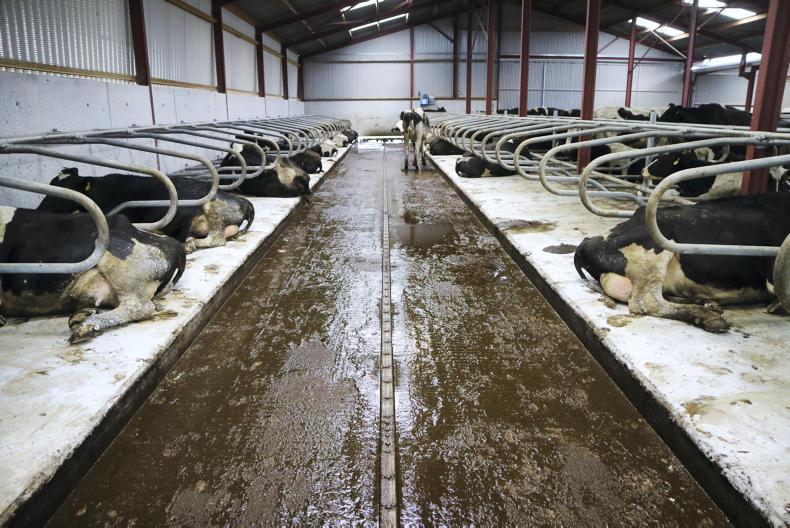
Observe how many cows are standing waiting.
1. Have enough space
One bed per cow should be everyone's target. The recommendation is actually 105 cubicles to 100 cows. Cows need to have their own bed to lie down. If they’re not lying or feeding they are left standing. This idle time can reduce production and greatly increase the risk of lameness.
2. Size
Big cows need bigger cubicles and smaller animals like heifers need smaller cubicles.
Cubicles should be designed for the biggest type of cow in the herd. Measure the length of cows before working out the size requirements for cubicles.
If cows aren’t lying correctly this is the first indication that something is wrong with the cubicle. These are often termed standing waiting cows, we don’t want to see any more than 5% of the herd doing this.
3. Cow comfort
I’m not sure if sand beds will ever be popular in the Irish system, but they are by far the most comfortable lying surface, followed by deep straw, green bedding and saw dust. Good bedding allows a cow make a nest in the cubicle.
Most Irish sheds feature cubicle mats – an absolute minimum for cows. These soft beds are of variable quality.
There are no excuses for leaving cows on concrete.
4. Space to the front
One problem I regularly see is short cubicles, with very little space for the cows' heads to swing or even lie forward. Cubicles against walls will often limit or restrict the movement and the ability of cows to lie into cubicles.
5. Neck rail
Neck rails are often used for structural reinforcement and to keep the cow landing in the right space. If the rail is rigid keep it high and forward so it doesn't obstruct the cow's movement. A good tip is watch cows lying, can they lie down in five seconds without difficulty. Newer designs often feature more flexible neck rails.
6. Brisket locator
The brisket board is a way of ensuring the cow isn't far forward. Cow size may determine where the brisket board goes. A minimum is 195cm for 650kg cow, this allows them sit correctly.
Most cows like low (5cm) rounded brisket boards. These help position the average cow so that they are not dunging in the bed but lying correctly. Remember to have plenty head space also in front of the brisket board.
7. Cubicle width
Get the width right to ensure cows lie square in the cubicles. A minimum width of 122cms from the middle of the dividers is recommended. Dry cows will need more space with up to 135cms being required. This again may depend on cow type.
8. Cubicle hygiene
Getting the cubicle size right will mean cows should sit or lie squarely and not defecate in the cubicle. However, cubicles still need to be cleaned regularly. Cubicle with mats should be cleaned twice daily with hydrated lime and sawdust.
9. Dividers
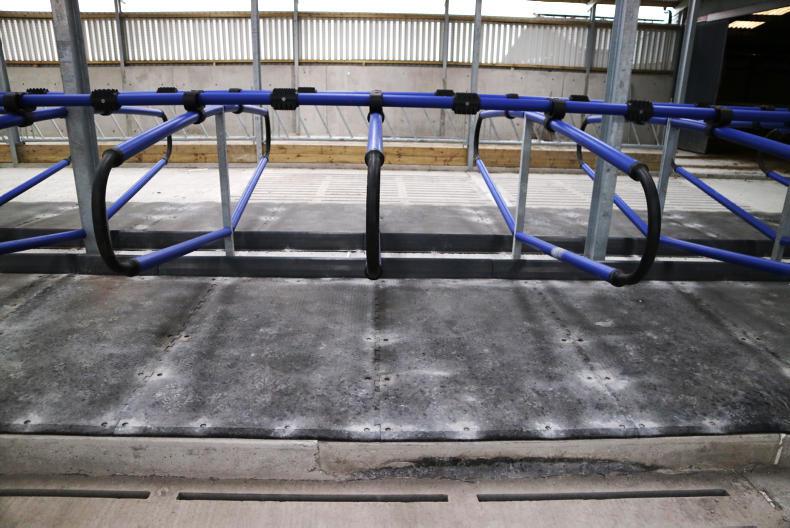
Flexible dividers work well between cows.
The dividers between cubicles can cause problems. Older designs often saw cows getting stuck in them. Marks on cows backs often indicate rubbing due to poor cubicle design.
The newer hard plastic flexible dividers allow cows lie down without the same rigidity of metal tubular ones.
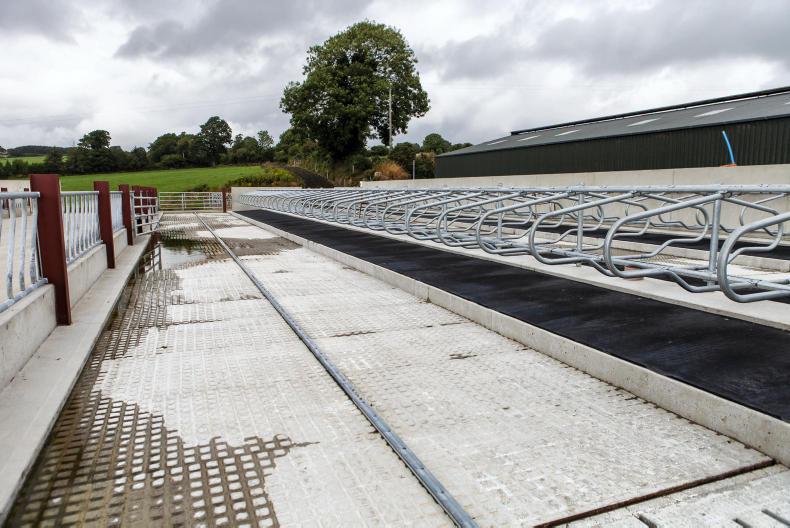
Outdoor cubicles are not without their challenges.
For outdoor cubicles the same rules apply.
I’ve seen some issues with mastitis in outdoor cubicles (of course indoors as well) and also I worry that when severe weather events occur there is simply not enough protection.
I believe a cow deserves a roof over their head in winter time. After the roof is on, the more open the shed the better, with wind breakers often being enough in exposed sides.
Anyone considering building sheds should also plant shelter belts around them.
It's important to maximise cow comfort, because it really does pay!
As we enter December most cows are now housed around the country, beginning an important period of the yearly cycle. Confinement and housing does however brings its own set of risks, with animals being kept in close quarters.
A challenge for the Irish system is damp winters – predominantly silage diets with lower dry matter combined with the damp can lead to mucky conditions. This creates favourable conditions for bacterial growth in housed systems, making hygiene very important. This can be aided by good ventilation and watching stocking densities in sheds.
Cows are simple animals, they like to spend their day indoors either feeding (six to eight hours) or lying down (12-14 hours), with some time for socialising and milking in between.
Maximising the amount of time they spend lying is really important as this is when rumination occurs. Cows will also feed together, usually meaning they will often lie down together. So getting that lying space right is critical.
The cubicle becomes a very important space for the winter.
Below are some tips for managing cubicle sheds this winter.

Observe how many cows are standing waiting.
1. Have enough space
One bed per cow should be everyone's target. The recommendation is actually 105 cubicles to 100 cows. Cows need to have their own bed to lie down. If they’re not lying or feeding they are left standing. This idle time can reduce production and greatly increase the risk of lameness.
2. Size
Big cows need bigger cubicles and smaller animals like heifers need smaller cubicles.
Cubicles should be designed for the biggest type of cow in the herd. Measure the length of cows before working out the size requirements for cubicles.
If cows aren’t lying correctly this is the first indication that something is wrong with the cubicle. These are often termed standing waiting cows, we don’t want to see any more than 5% of the herd doing this.
3. Cow comfort
I’m not sure if sand beds will ever be popular in the Irish system, but they are by far the most comfortable lying surface, followed by deep straw, green bedding and saw dust. Good bedding allows a cow make a nest in the cubicle.
Most Irish sheds feature cubicle mats – an absolute minimum for cows. These soft beds are of variable quality.
There are no excuses for leaving cows on concrete.
4. Space to the front
One problem I regularly see is short cubicles, with very little space for the cows' heads to swing or even lie forward. Cubicles against walls will often limit or restrict the movement and the ability of cows to lie into cubicles.
5. Neck rail
Neck rails are often used for structural reinforcement and to keep the cow landing in the right space. If the rail is rigid keep it high and forward so it doesn't obstruct the cow's movement. A good tip is watch cows lying, can they lie down in five seconds without difficulty. Newer designs often feature more flexible neck rails.
6. Brisket locator
The brisket board is a way of ensuring the cow isn't far forward. Cow size may determine where the brisket board goes. A minimum is 195cm for 650kg cow, this allows them sit correctly.
Most cows like low (5cm) rounded brisket boards. These help position the average cow so that they are not dunging in the bed but lying correctly. Remember to have plenty head space also in front of the brisket board.
7. Cubicle width
Get the width right to ensure cows lie square in the cubicles. A minimum width of 122cms from the middle of the dividers is recommended. Dry cows will need more space with up to 135cms being required. This again may depend on cow type.
8. Cubicle hygiene
Getting the cubicle size right will mean cows should sit or lie squarely and not defecate in the cubicle. However, cubicles still need to be cleaned regularly. Cubicle with mats should be cleaned twice daily with hydrated lime and sawdust.
9. Dividers

Flexible dividers work well between cows.
The dividers between cubicles can cause problems. Older designs often saw cows getting stuck in them. Marks on cows backs often indicate rubbing due to poor cubicle design.
The newer hard plastic flexible dividers allow cows lie down without the same rigidity of metal tubular ones.

Outdoor cubicles are not without their challenges.
For outdoor cubicles the same rules apply.
I’ve seen some issues with mastitis in outdoor cubicles (of course indoors as well) and also I worry that when severe weather events occur there is simply not enough protection.
I believe a cow deserves a roof over their head in winter time. After the roof is on, the more open the shed the better, with wind breakers often being enough in exposed sides.
Anyone considering building sheds should also plant shelter belts around them.
It's important to maximise cow comfort, because it really does pay!







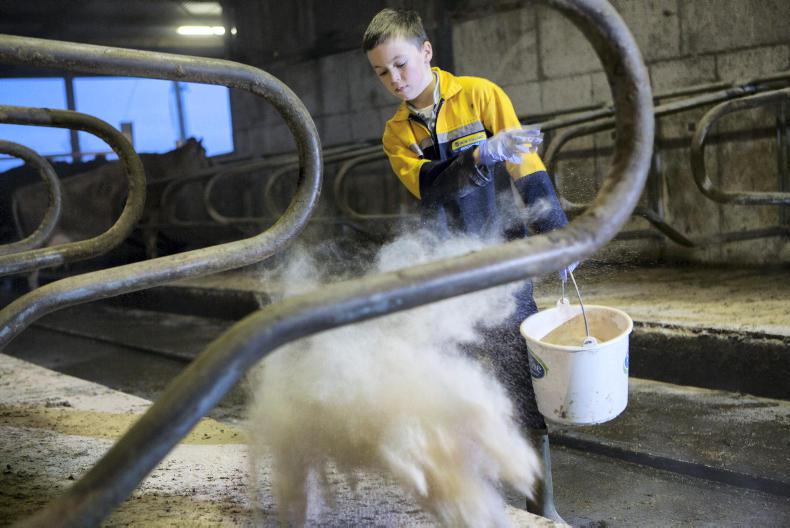

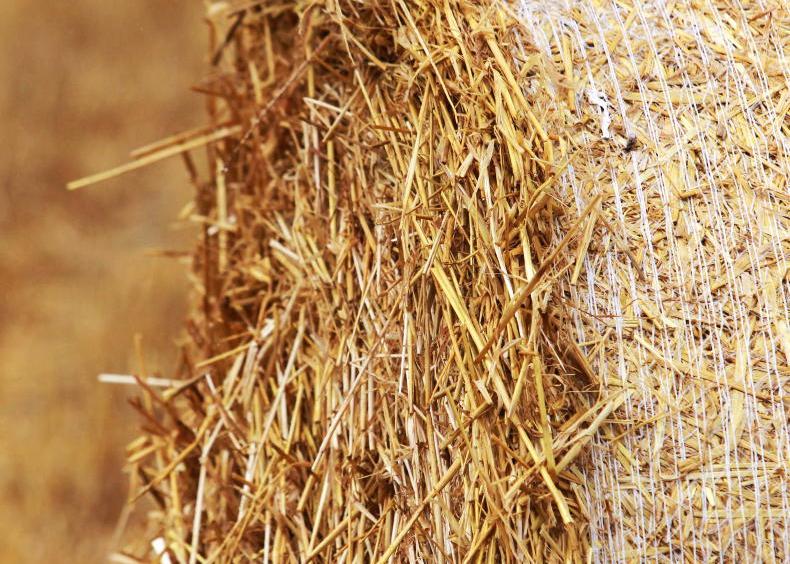
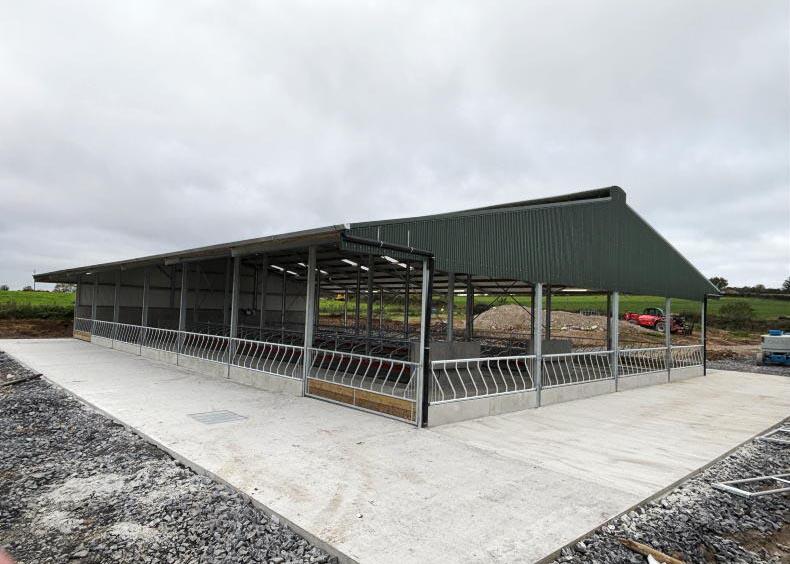
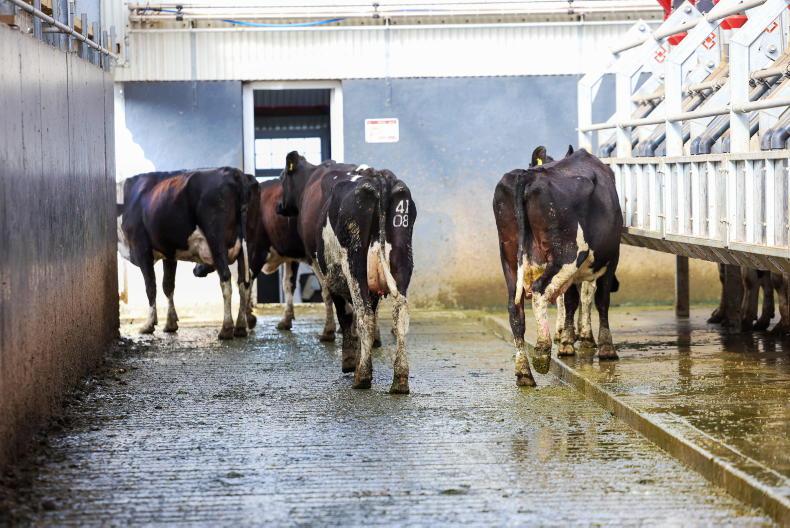
SHARING OPTIONS